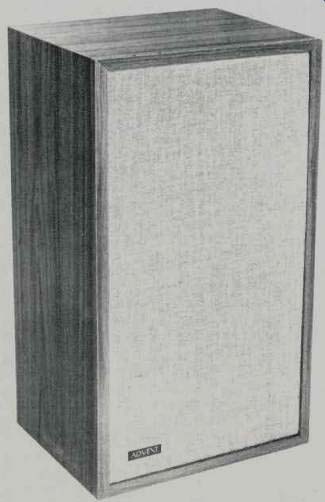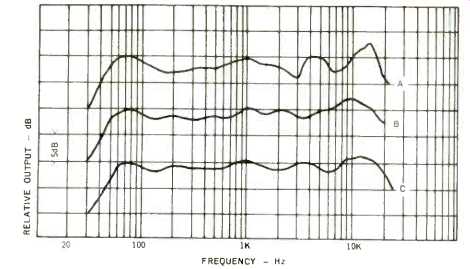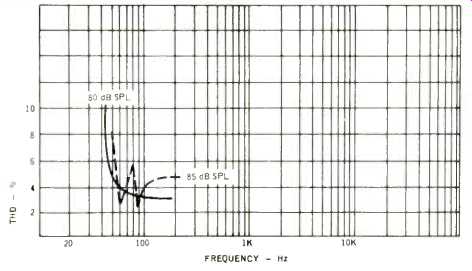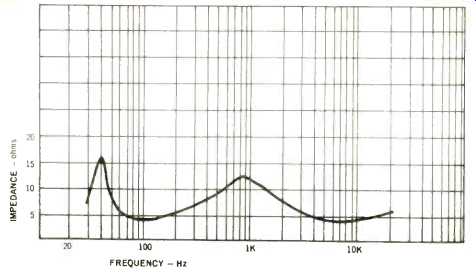
MANUFACTURER'S SPECIFICATIONS
System Type: Two-way, acoustic suspension.
Components: One 9 1/2-in. woofer, one 7/8-in. dome tweeter.
Frequency Response: 30-20,000 Hz-4 dB.
Nominal Impedance: 4 ohms.
Dimensions: 11 1/2 in. W, 20 in. H, 9 1/4 in. D.
Weight: 27 lbs.
Price: $ 69.95.
As most readers know, Advent makes two speaker systems which are designated with some logic as "the Advent loudspeaker" and "the Smaller Advent loudspeaker." It might have been less confusing if they had model numbers but there it is... . The larger system was reviewed in these pages in July 1970, and the reviewer, Alex Rosner, said, "One could say at twice the price the Advent speaker would be good value, but at $112.00 it is a bargain." The price is now $116.00 but the $4.00 increase is not that significant. The large system uses a 10-in. bass unit with a 2-in. tweeter but the smaller version has an 8-in. bass speaker (actually 8 1/2 in. cone) with a 2-in. tweeter. This is fitted with a 7/8-in. center dome which aids dispersion. Cabinet size is half the volume of the larger model but the system resonance is about the same, 40 Hz or so. As might be expected, the two systems sound quite similar, the main differences being a reduced handling capacity and 2 or 3 dB lower sensitivity, probably due to the mass loading of the bass unit to bring the system resonance down. Crossover frequency is 1,500 Hz.
Measurements

Fig. 1--Frequency response to one-third octave pink noise. Curve A is taken
on-axis, B, 45 degrees off-axis, and C is an average of five positions.

Fig. 2--Tone-burst response. A is 100 Hz; B, 500 Hz, and C is 5,000 Hz.

Fig. 3--THD at 80 and 85 dB SPL, which correspond to 4 and 10 watt inputs,
respectively.

Fig. 4--Impedance characteristics. The low point is 4.2 ohms.
Frequency response measured with one-third octave pink noise is shown in Fig. 1. Curve A is taken on-axis, B at 45 degrees off-axis, and C represents an average of five positions. Note that the off-axis response is slightly smoother than the direct on-axis curve which, incidentally, was taken at the standard distance of one meter. Bass was well maintained with a fairly broad rise in the 50 to 70 Hz region. Fig. 2 shows the tone-burst performance at 100, 500 and 5,000 Hz. The distortion is shown in Fig. 3 for output levels of 80 and 85 dB SPL, equivalent to power inputs of 4 and 10 watts.
The impedance characteristics are shown in Fig. 4, and it will be seen that the lowest point is 4.2 ohms with an average of 6 ohms.
Frequency doubling commenced at 40 Hz with an input of 25 watts rms continuous power, but the system could put out quite an appreciable amount of fundamental down to 35 Hz--which is remarkable for such a small enclosure. At 60 Hz it would handle 60 watts rms continuous power, without distress. White noise showed low coloration--just a trace of hardness on-axis.
Listening Tests
How did it compare with the larger model? Well, first of all, it must be said that they both had the same kind of sound quality, so you could use them as rear channel speakers--with the larger ones up front in a quadraphonic system without losing too much. Overall power handling capacity was less and more power was necessary to drive them. However, a 20 to 30 watt (per channel) amplifier should be adequate for small or medium size rooms, although the system will handle much greater power. Bass was equally as deep and satisfying, and really the differences were not as great as we expected. Indeed, the Smaller Advent (see what I mean about the lack of a model number?) compared more than favorably with several larger systems costing a lot more. Even our latest test record--"Music For Organ, Percussion, and Brass" with E. Power Briggs (CBS)--sounded quite impressive and those low notes came over remarkable well. Would they be a bargain at twice the price? Possibly, but if you are spending that much-buy the larger model. However, if space or the budget is limited, then by all means consider the smaller version.
-G.W.T. & T.A.
(Audio magazine, Dec. 1972)
Also see:
Advent Speaker System (Jul. 1970)
Advent loudspeakers (ad, Dec. 1972)
Advent Model 300 Stereo FM Receiver (Equip. Profile, June 1977)
= = = =